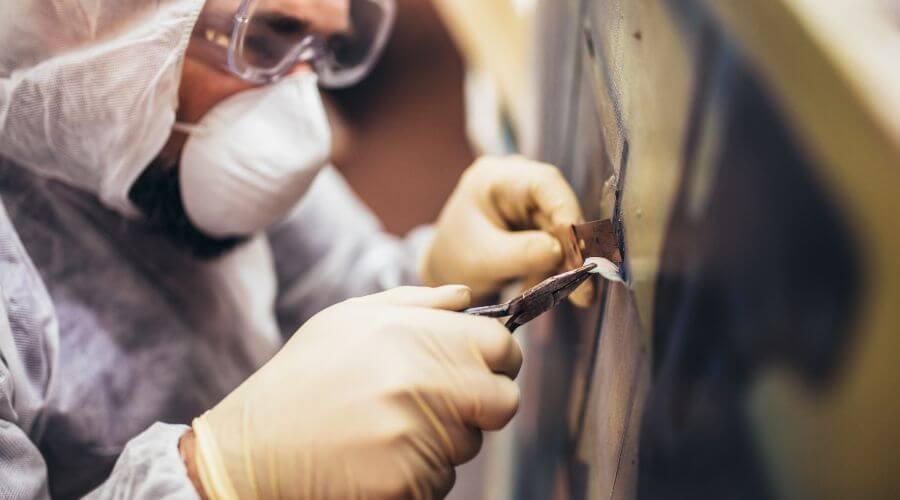In Fultondale, AL, unexpected water damage from storms, leaking pipes, or sewage backups can strike at any time—often causing extensive damage in just a few hours. When disaster hits, it's crucial to act fast. Water damage restoration is a multi-step process that requires professional equipment, trained technicians, and prompt intervention. A reputable provider like Home Water Services offers 24/7 assistance for homeowners and businesses facing such emergencies. For immediate help, they can be reached at (214) 286-6899.
Whether the cause is a basement flood or burst pipe, the process begins with a structured plan to restore the property to a safe, livable condition. Here’s what the restoration process looks like in detail.

Initial Damage Assessment and Inspection
The first step in water damage restoration involves a comprehensive inspection of the affected property. Certified professionals assess the severity and category of the water—whether it’s clean, gray, or contaminated (black) water. This distinction determines both safety protocols and the type of restoration required.
Moisture detection tools such as hygrometers, infrared cameras, and moisture meters are used to evaluate how deeply the water has penetrated walls, floors, and ceilings. Proper assessment ensures that all hidden damage is accounted for, and it also supports homeowners during insurance claims. In Fultondale, timely inspections are especially important due to the region’s variable weather and high humidity levels.
Water Extraction and Removal
Once the inspection is complete,
the next phase is rapid water removal. Restoration teams use submersible pumps, industrial vacuums, and truck-mounted extractors to remove standing water as quickly as possible. The goal during this phase is to stop further structural damage and reduce the risk of microbial growth.
Experts recommend starting extraction within the first 24 hours after the incident to prevent permanent damage to floors, drywall, and insulation. Especially in cities like Fultondale, where older buildings may have less water-resistant construction, acting quickly can save thousands in future repair costs.
Drying and Dehumidification
Once the majority of the water has been removed, the next crucial step in water damage restoration is drying and dehumidification. This phase is essential to prevent mold and mildew growth, which can start to form in as little as 24 to 48 hours. Restoration companies utilize high-powered air movers, industrial dehumidifiers, and specialized drying equipment to speed up the evaporation process.
Maintaining proper humidity levels is key during this phase, especially in areas with high moisture like Fultondale, where humidity can prolong the drying process. These professional-grade tools allow technicians to dry out walls, floors, and other porous materials effectively. The longer materials stay wet, the higher the chance of long-term structural damage, so having a trained team on-site to monitor the process is critical.
Cleaning and Sanitizing
After the property has dried, thorough cleaning and sanitization is a critical step in the water damage restoration process. Water, especially from contaminated sources like sewage backups or stormwater, can harbor harmful bacteria, viruses, and mold spores. The cleaning phase ensures that all affected areas are sanitized properly, reducing the risk of illness and future damage.
Water damage restoration experts apply antimicrobial treatments to disinfect surfaces, and specialized fogging equipment may be used to purify the air. Soft furnishings, like upholstery and carpets, may be cleaned or discarded, depending on the extent of contamination. This is where experience matters—removing all debris and sanitizing surfaces helps ensure the space is safe to live and work in once more.
Full Restoration and Repairs
The final stage of water damage restoration is full structural restoration. Depending on the severity of the damage, this may involve replacing drywall, installing new flooring, or even rebuilding entire sections of a home or business. Home Water Services provides comprehensive restoration that not only focuses on cleanup but also ensures the structural integrity of your property is restored to pre-loss conditions.
Restoration professionals work with licensed contractors to handle the rebuild, ensuring that all repairs meet local codes and standards. Whether it’s replacing insulation, repairing ceilings, or restoring cabinetry, every effort is made to return your property to its original condition, or better.

Conclusion
The water damage restoration process in Fultondale, AL is a detailed, multi-step operation that requires quick action, professional equipment, and expert knowledge. Homeowners and businesses experiencing water damage should never wait too long to get help—every minute counts in minimizing long-term damage. The best course of action is to contact experienced restoration teams, such as Home Water Services, that can respond immediately and begin restoring your property to safety. For reliable and fast service, contact Home Water Services at (214) 286-6899 and take the first step toward recovery.
FAQs
How long does water damage restoration take in Fultondale, AL?
The restoration timeline varies based on the severity of damage. Minor cases may take 2–3 days, while major water intrusions involving structural repairs can take 1–2 weeks or more.
Is water damage covered by homeowners insurance?
Yes, most policies cover sudden and accidental water damage (e.g., burst pipes). However, gradual damage or flooding may require separate flood insurance. Always check your specific policy.
How soon should I start water damage cleanup after a flood?
Immediately. Cleanup should begin within 24 hours to prevent mold growth and structural deterioration. Delays increase costs and health risks.
What are signs of hidden water damage?
Common signs include musty odors, peeling paint, warped flooring, and discoloration on ceilings or walls. Moisture meters or thermal imaging can detect hidden issues.
Can I handle water damage restoration myself?
Small spills may be manageable, but professional restoration is recommended for anything involving drywall, insulation, or potential mold. Experts ensure thorough drying and sanitization.









Comments (0)